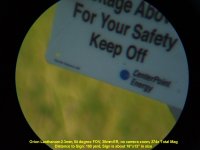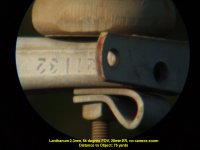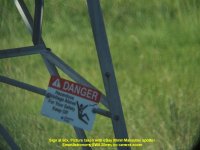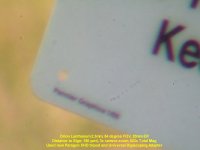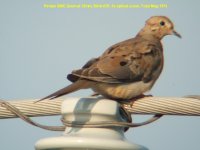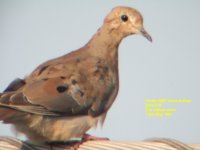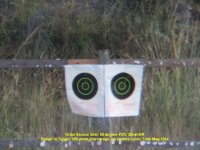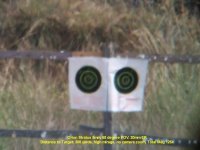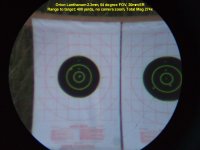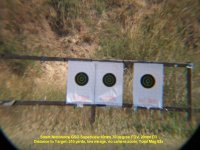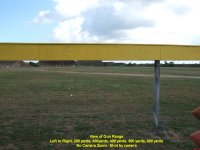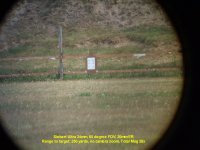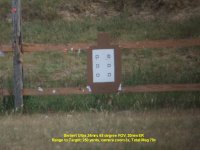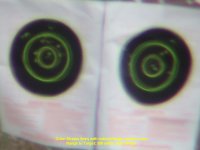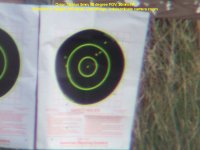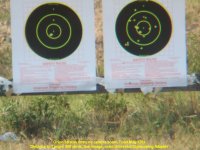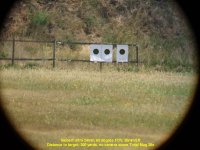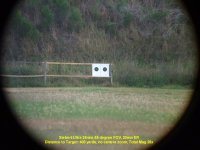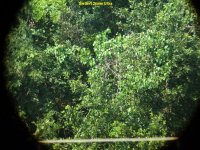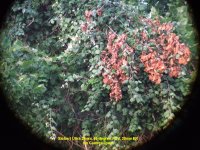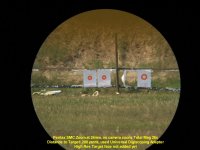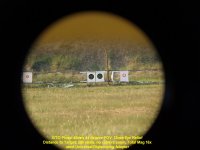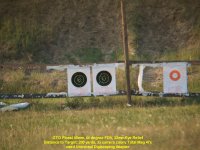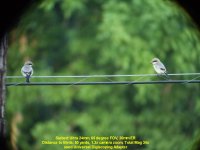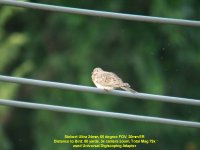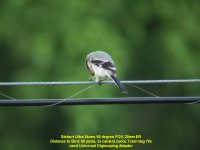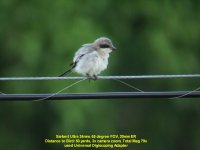Can Popper
Well-known member
The thought has occured to me, that's why I started the post out with "Just for grins".
In reality, the only things worth seeing with the 2.3 lanthanum are the stars and planets that it was made to see. Don't have to worry about any depth of field with those subjects.
Maybe I'll try the 2.3mm on some subject really far away terrestrially. That would help eliminate the depth of field problem. However, atmospheric attenuation and distortion would come into play big time.
*EDIT* I found the following sign that is more on a single focal plane. Distance to it is about 150 yards. Picture taken with Lanthanum 2.3mm using no camera zoom. Sign is about the size of the "For Rent" or "For Sale" signs that are standard in the US. Notice how the fine print is readable even at this range and magnification.
Also included a picture of the coupling on an utility pole located 75 yards away.
In reality, the only things worth seeing with the 2.3 lanthanum are the stars and planets that it was made to see. Don't have to worry about any depth of field with those subjects.
Maybe I'll try the 2.3mm on some subject really far away terrestrially. That would help eliminate the depth of field problem. However, atmospheric attenuation and distortion would come into play big time.
*EDIT* I found the following sign that is more on a single focal plane. Distance to it is about 150 yards. Picture taken with Lanthanum 2.3mm using no camera zoom. Sign is about the size of the "For Rent" or "For Sale" signs that are standard in the US. Notice how the fine print is readable even at this range and magnification.
Also included a picture of the coupling on an utility pole located 75 yards away.
Attachments
Last edited:




